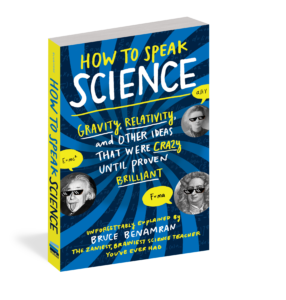Do you know where the most dangerous place in the world is? Just to be clear, let me establish right now that by dangerous, I mean “where you are most likely to die.” That’s probably a very reductive understanding of the word dangerous, but it’s my book so I’ll do what I want. The most dangerous place in the world is nowhere other than in bed. Statistically, the place where you are most likely to take your final breath is quite simply a bed. Period. End of story.
I hope you agree that saddling beds with that kind of a reputation makes as much sense as saying “life is the world’s deadliest sexually transmitted disease.” It’s playing with words, of course, but that’s exactly the point of this chapter. Before I dive right in and give you your money’s worth, let’s take a few minutes—or maybe a few pages; I have no idea how quickly you read—to properly understand just how easily words can deceive us.
To say “beds are dangerous” is to say “that act of getting into a bed puts us in danger.” While many people do die in bed, the beds are not the culprits. They aren’t the cause of danger. Why do so many people die in bed? Many sick people and many elderly people spend more time in bed than do young, dynamic, thrill-seeking, recent college graduates. As a result, we can say, quite literally, deadly situations are more often encountered by people who are in bed, right where the Grim Reaper is lying in wait. There is definitely a correlation between the act of dying and the act of being in bed.
So begins Bruce Benamran’s explanation of correlation versus causality in his new book, How to Speak Science. Benamran is making an important point here about the difference between the two—how simple it could be to bungle them, but how silly and potentially dangerous that would be. I mean, would you ever get into bed again? In making this point, he demonstrates the importance of words.

For those of us who are laymen, science feels impossibly inaccessible—a series of complex equations and formulas that we were fine leaving behind in high school. But that’s too bad, because science is fascinating, and is all around us. What Bruce Benamran makes clear in How to Speak Science is that even scientists think in words. Before the equations could ever come about, Einstein thought to himself, “What would happen to the earth if the sun disappeared?” Benamran guides us through the wildest hypotheses and most ingenious ideas of Galileo, Newton, Curie, Einstein, and science’s other greatest minds, reminding us that while they weren’t always exactly right, they were always curious.
And aren’t even us non-scientists curious, too? Don’t you wonder things like, “Why do they turn off airplane cabin lights for night landings?” It is not, in fact, because the pilot wants you to enjoy the beautiful city lights upon descent. There is a scientific explanation—and in How to Speak Science Benamran gives it to you. In the process, I can guarantee that you will also learn a little something about the way our eyes are structured and the way they process light. In other words, you will learn to think a little bit like a scientist, to (can I say?) speak a little science.
By tracing today’s big ideas back to the earliest thought experiments, Benamran explains not only what scientists know, but how they think—and gives readers the tools to think for themselves. And he has plenty of practice breaking down scientific concepts into those things we all speak: words. On his YouTube channels Get It and e-penser he explains things like general relativity with his trademark humor and wit.
For help understanding general relativity, check out one of his videos below. For the answer to why airlines turn off cabin lights for night landings (and you know, many more answers to many more questions) check out How to Speak Science, available for preorder here and wherever books are sold on September 4.


